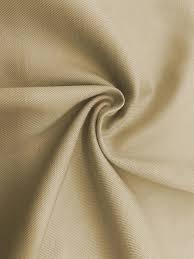When it comes to construction and woodworking, plywood has long been a go-to material due to its strength, versatility, and relatively low cost. However, as the demand for sustainable and budget-friendly building materials rises, many are asking the question: What is as strong as plywood but cheaper? In this article, we will explore several alternatives that not only match the strength of plywood but also offer cost savings, sustainability, and unique properties that can benefit various projects.
Understanding Plywood's Strength
Before delving into alternatives, it’s essential to understand what makes plywood a popular choice. Plywood is made from thin layers of wood veneer glued together, which provides excellent tensile strength and resistance to warping. Its cross-laminated structure allows it to withstand heavy loads and resist splitting, making it ideal for everything from furniture to structural applications. However, the rising costs of timber and environmental concerns have prompted the search for more economical and sustainable options.
- Oriented Strand Board (OSB)
One of the most common substitutes for plywood is Oriented Strand Board (OSB). Made from strands of wood that are oriented in specific directions and bonded with adhesives, OSB offers comparable strength and durability to plywood.
Cost-Effectiveness: OSB is generally cheaper than plywood due to the use of smaller, less expensive wood strands and the efficient manufacturing process.
Applications: It is widely used in construction for sheathing, flooring, and roofing. However, it is essential to note that OSB is more susceptible to moisture damage than plywood, so it may not be suitable for all applications.
- Medium Density Fiberboard (MDF)
Medium Density Fiberboard (MDF) is another alternative that can be as strong as plywood in certain applications. MDF is made from wood fibers combined with adhesives under heat and pressure, resulting in a dense and smooth board.
Cost-Effectiveness: MDF is often less expensive than plywood, especially for interior applications where aesthetics are a priority.
Applications: It is ideal for furniture, cabinetry, and decorative moldings. However, MDF is not suitable for outdoor use due to its susceptibility to moisture and lack of structural strength compared to plywood.
- Particle Board
Particle board is an engineered wood product made from wood chips, sawmill shavings, and sawdust, which are bonded together with adhesives. While it may not have the same structural integrity as plywood, it can be a cost-effective alternative for specific applications.
Cost-Effectiveness: Particle board is one of the cheapest wood products available, making it an attractive option for budget-conscious projects.
Applications: It is commonly used in furniture and cabinetry, particularly in low-stress applications. However, it is crucial to consider its lower durability and strength compared to plywood.
- Bamboo Plywood
Bamboo plywood is an eco-friendly alternative that offers impressive strength and durability. Made from laminated bamboo strips, this material is not only strong but also sustainable, as bamboo grows rapidly and can be harvested without damaging the ecosystem.
Cost-Effectiveness: While bamboo plywood can be more expensive than traditional plywood, its sustainability and unique aesthetic appeal can justify the cost for many projects.
Applications: It is suitable for furniture, flooring, and cabinetry, providing a modern look while being environmentally friendly.
- Recycled Wood Products
With the increasing focus on sustainability, recycled wood products have gained popularity. These materials are made from reclaimed wood, which can be processed into boards that are as strong as plywood.
Cost-Effectiveness: Depending on the source, recycled wood products can be less expensive than new plywood, especially when considering the environmental benefits.
Applications: They are perfect for furniture, flooring, and decorative elements, adding a unique character to any project.
Conclusion
When searching for materials that are as strong as plywood but cheaper, it’s essential to consider the specific requirements of your project. Each alternative has its strengths and weaknesses, and the best choice will depend on factors such as application, environmental impact, and budget constraints.

